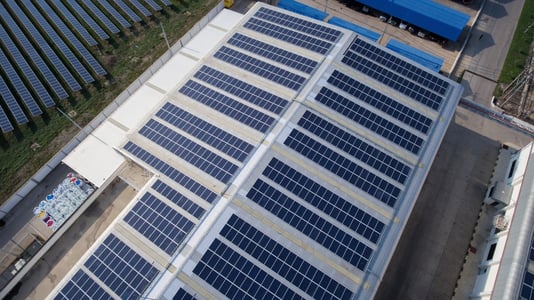Community Solar Power: A Clean Energy Option for Consumers Without Individual Roofs

Since New York gets much less sunshine than states like California or Arizona, many property owners do not consider solar panels among their options when they want to reduce energy expenses. However, New York is actually one of the leading states in solar power deployment, combining many favorable conditions for photovoltaic arrays.
First of all, consider that New York has expensive electricity: while the US average price is around 13 cents/kWh, tariffs above 20 cents/kWh are common in NY.
- An electricity output of 1,000 kWh saves you $1,300 in a state with average prices.
- However, savings for the same amount of energy increase to over $2,000 in NY. Having less sunshine than other states does not matter when every kilowatt-hour is worth more.
New York also offers excellent incentives for solar power systems: sales tax and property tax exemptions, a state tax credit of up to $5,000 per installation, and the NY-Sun rebate program. These benefits are combined with a 30% federal tax credit that applies for all solar systems installed before 2020.
Unfortunately, many New York citizens cannot use solar power because they live in apartments or condominiums without an individual rooftop. According to the National Renewable Energy Laboratory (NREL), around half of US citizens do not have a suitable area for a photovoltaic array. However, the community solar program provides a viable alternative in these cases.
Interested in generating your own electricity?
Find the best option for your property.
Overview of the Community Solar Power Program
With community solar power, NY homeowners can reduce their power bills with a photovoltaic array located somewhere else:
- Program managers and technology partners get in touch with the owners of warehouses and other properties with ample rooftops.
- Property owners are offered a monthly rent payment for a portion of their roof area. Once an agreement is reached, the rooftop area is available for a solar PV system.
- New Yorkers can join community solar groups, and each group shares a solar system.
- There is a group size limit, normally based on the capacity of the corresponding solar system. Groups cannot grow indefinitely, or the savings per member become too low.
Of course, Con Edison plays a key role in making this program possible. The electricity generation of the community solar system is metered, and the corresponding benefits are split among the group members.
- It is important to note that both apartment owners and renters are eligible for the program; community solar projects are linked with user accounts, not with their actual address.
- Actually, the community solar approach has an advantage over conventional installations at client premises. If any of the project participants relocate, the savings are applied at their new residences.
- Economies of scale are another advantage of community solar projects. The cost per kilowatt is lower for a large array, compared with many small installations adding up the same capacity across multiple properties.
The main challenge in new community solar projects is contacting electricity consumers willing to participate, and then connecting them with a host willing lease rooftop area for a PV array. Once these two elements are in place, it is just a matter of designing and installing the system.

One of the largest community solar projects in New York is the Sullivan County installation, with a capacity of 2.7 megawatts. The project received $1.3 million in state funding, and it is composed of 9,800 solar modules. The emissions avoided with the project are estimated at 1,670 metric tons per year.
Community Solar Options
Just like when solar panels are installed directly in your building, there are several options when you join a community solar project.
- Purchase a share of the solar project: This is not very different from purchasing an array for your property - the solar panels are simply located somewhere else and merged into a larger installation. With this option, you get a portion of total savings in proportion to your ownership share. For example, if you own 10 kW of capacity in a 200 kW system, you get 5% of the savings.
- Subscription-based community solar power: Instead of purchasing a share of the project, you pay for low-cost electricity on a monthly basis. This shows up as a deduction in your power bill, but actually you are paying for cheaper kilowatt-hours.
Community solar power is very promising in New York, considering the large population living in multifamily buildings without individual rooftop areas. In addition, even though the concept has been associated mostly with residential users, a similar approach is viable for businesses. Companies renting commercial spaces can pool their resources, to save on electricity bills with a shared solar installation.

Michael Tobias
Michael Tobias, the Founding Principal of NY Engineers, currently leads a team of 150+ MEP/FP engineers and has led over 4,000 projects in the US
Join 15,000+ Fellow Architects and Contractors
Get expert engineering tips straight to your inbox. Subscribe to the NY Engineers Blog below.

